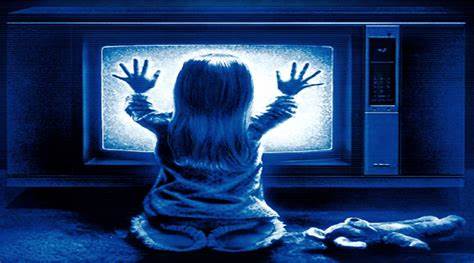In the realm of horror cinema, certain films have left an indelible mark on our collective psyche. One such movie is the 1982 classic “Poltergeist,” directed by Tobe Hooper and produced by none other than Steven Spielberg.
This supernatural thriller has enthralled audiences for decades, but did you know that it harbors a spine-chilling secret? Brace yourself as we delve into the eerie backstory of “Poltergeist” and uncover the bone-chilling truth about its use of real skeletons.
Contents
- The Haunting Plot
- The Curse of the Set
- Why Real Skeletons?
- The Infamous Pool Scene
- Similar controversies in the film industry the 1982 movie poltergeist used real skeletons as – TYMOFF
- The Ethical Dilemma
- The Legacy of “Poltergeist”
- Conclusion
- People May Ask
- Did they use real skeletons in the Pirates of the Caribbean ride?
- Did they use real skeletons in the Goonies?
- Where did they film Poltergeist in 1982?
- How did Heather O’Rourke pass away?
The Haunting Plot
Before we unravel the macabre mystery, let’s revisit the film’s plot. “Poltergeist” revolves around the Freeling family, who move into a seemingly idyllic suburban home. However, their blissful existence takes a terrifying turn when malevolent spirits invade their lives.
Strange occurrences escalate: chairs stack themselves, toys come to life, and the youngest daughter, Carol Anne, communicates with unseen entities through the static on the television screen. Desperate for answers, the Freelings seek the help of paranormal investigators.
The Curse of the Set
Now, let’s rewind to the film’s production. The crew faced numerous challenges while creating the eerie atmosphere for “Poltergeist.” One of the most infamous aspects was the decision to use real human skeletons in certain scenes.
Yes, you read that correctly actual bones from deceased individuals were employed to heighten the film’s authenticity.
Why Real Skeletons?
The use of real skeletons was not uncommon in older horror films. Back then, obtaining synthetic skeletons was expensive, and the realism achieved with genuine bones was unmatched. However, this practice came with a dark history. The skeletons used in “Poltergeist” were reportedly sourced from medical schools and scientific institutions.
These were once living people who had donated their bodies for educational purposes. Imagine the eerie energy lingering around those bones!
The Infamous Pool Scene
The most memorable and chilling scene involving the real skeletons occurs when the Freelings’ backyard swimming pool erupts with corpses. As the ground churns, skeletal remains emerge, clawing their way to the surface.
The actors’ reactions were genuine; they had no idea they were surrounded by actual human bones. The shock and fear captured on their faces were authentic.
Similar controversies in the film industry the 1982 movie poltergeist used real skeletons as – TYMOFF
The 1982 horror movie “Poltergeist” stirred up quite a bit of controversy due to its use of real skeletons in certain scenes. While rumors and misconceptions often surround the film industry’s use of props and special effects, this particular case isn’t unique. Other movies, like “The Texas Chainsaw Massacre” and “The Evil Dead,” have faced similar allegations, claiming that real human remains were used during production.
However, upon closer investigation, these claims were debunked, revealing that the skeletons were not actually real. It’s crucial to approach such controversies with skepticism and rely on factual evidence to separate truth from fiction.
The use of real skeletons in “Poltergeist” even contributed to the legend of the so-called “Poltergeist curse,” which suggests that those involved with the franchise ended up marked by dark forces.
The Ethical Dilemma
In hindsight, the decision to use real skeletons raises ethical questions. Should filmmakers prioritize realism over respecting the dignity of the deceased? The answer is complex. While it undoubtedly added to the film’s eerie ambiance, it also perpetuated a sense of unease among the cast and crew. Spielberg himself expressed regret over this choice later on.
The Legacy of “Poltergeist”
Despite or perhaps because of the real skeletons, “Poltergeist” remains a horror classic. Its blend of supernatural terror, family drama, and spine-tingling visuals continues to captivate audiences. The film’s legacy extends beyond the screen, serving as a cautionary tale for filmmakers: tread carefully when dealing with the remnants of the departed.
Conclusion
So, the next time you watch “Poltergeist,” remember that the skeletons lurking in the shadows are more than mere props. They carry a haunting history a reminder that even in the world of make-believe, reality can be bone-chillingly unsettling.
People May Ask
Did they use real skeletons in the Pirates of the Caribbean ride?
Yes, when Disneyland’s “Pirates of the Caribbean” ride opened in 1967, real human skeletons were used because the faux skeletons of that time were deemed unconvincing. However, as fake skeleton technology improved, the real ones were replaced with replicas and given proper burials.
Did they use real skeletons in the Goonies?
No, the skeletons in “The Goonies” were not real. The bone organ setpiece was a collaboration between the film’s production crew and Industrial Light & Magic, created from real bones and pieces of bamboo for the organ, but the skeletons of One-Eyed Willy’s crew were fake and fully poseable.
Where did they film Poltergeist in 1982?
“Poltergeist” was filmed primarily in Simi Valley and Agoura Hills, California. Principal photography mostly took place on Roxbury Street in Simi Valley.
How did Heather O’Rourke pass away?
Heather O’Rourke passed away on February 1, 1988, at the age of 12. The official cause of death was intestinal stenosis, a congenital condition that had gone undetected since her birth. She died on the operating table at the Children’s Hospital of San Diego while surgeons attempted to remove a severe bowel obstruction that had caused septic shock.

I am a passionate technology and business enthusiast, constantly exploring the intersection where innovation meets entrepreneurship. With a keen eye for emerging trends and a deep understanding of market dynamics, I provide insightful analysis and commentary on the latest advancements shaping the tech industry.
